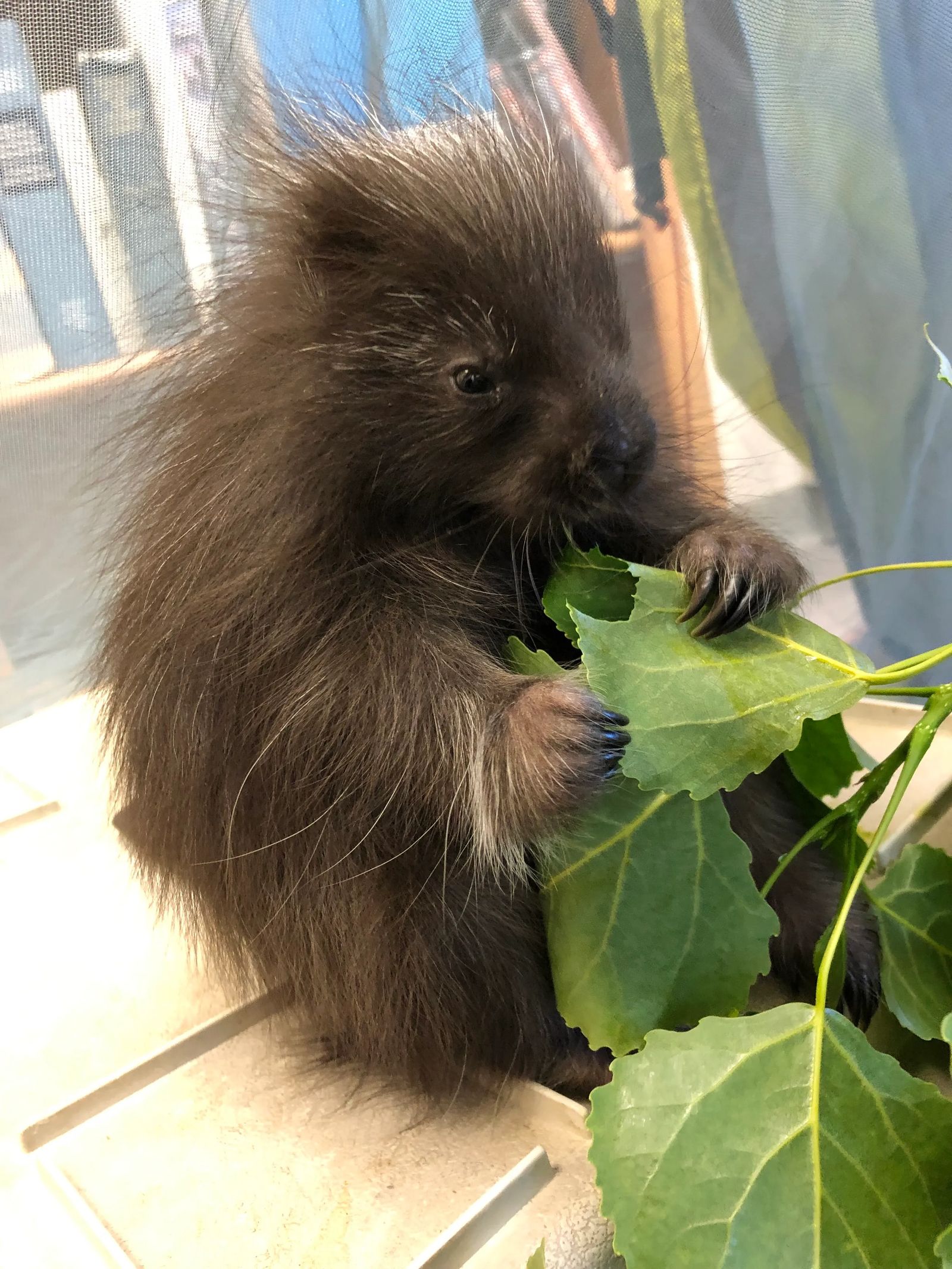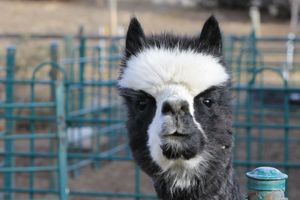
North American Porcupine
Erethizon dorsatum
North American porcupines are the second largest rodent, after the beaver, and can weigh up to twenty pounds and be up to two or three feet tall. Most of their body is black to brownish-yellow fur or hairs with quills on top of this fur on most of their backside (everywhere except their stomach). They have strong, short legs with the soles of their paws being hairless to help them with climbing. Their iconic quills are specially adapted hairs with barbed tips which are solid at the end and hollow for most of the shaft. Their quills get longer as they go down their body, their shortest quills being around their face and their longest quills being around their rump. Contrary to popular belief, they cannot throw or shoot their quills. Instead, when they're threatened, they will stick their quills and hairs up. When a predator even lightly touches the porcupine’s body, the quills will then stick to the animal due to being lightly attached to the porcupine. North American porcupines can be found in Canada, northwestern and western regions of the United States, and even northern Mexico. Porcupines are herbivores and will eat mainly most parts of the trees.
Click HERE for a Porcupine Activity Sheet!
Our Current Residents
Both of our porcupine residents are in the same habitat as the skunks. You may notice over there that it is a bit smelly — it is not the skunks’ fault! The skunks of ZooMontana no longer have scent glands; however, porcupines are also known for having a pungent odor.
Lander, Female- Born on April 1, 2019
Lander came to ZooMontana as a young porcupette after her mother passed due to a vehicle collision. Upon arriving, she was hand raised by zoo staff which deemed her non-releasable. Compared to Ross, Lander is a lighter brown color with blonde guard hairs.
You can get to know Lander better and meet her in person through our programs scheduled through the Education Department!
Ross, Male- Born on April 15, 2017 (estimated and celebrated)
Ross came from the Red River Zoo in Fargo, North Dakota where he had lived since 2017. In June of 2021, Ross came to live with us at the Zoo as a companion for Lander. Ross is a darker color and can be found sitting up in a tree, on a rock, or dancing. Both Ross and Lander are part of the N.A. porcupine Species Survival Plan, so they are a breeding pair.
Taxonomy
- Kingdom: Animalia
- Phylum: Chordata
- Class: Mammalia
- Order: Rodentia
- Family: Erethizontidae
- Genus: Erethizon
- Species: Erethizon dorsatum
Animal Facts
Herbivore: mainly eat berries, seeds, grasses, leaves, roots, evergreen needles, inner bark
Population Status (according to IUCN): currently listed as Least Concern
Montana Population Status (according to Montana Field Guide): currently listed as Potential Species of Concern
Habitat: mixed forest, grasslands, deserts, shrubs, and even tundra
Activity: nocturnal- mostly active during the night



















































